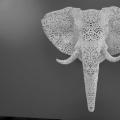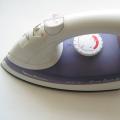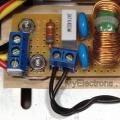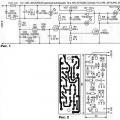They are a thing of the past, and now, in order to assemble any simple amplifier, you no longer have to suffer with calculations and rivet a large printed circuit board.
Now almost all cheap amplifying equipment is made on microcircuits. The most widely used TDA chips for amplifying the audio signal. These are currently used in car radios, active subwoofers, home acoustics, and many other audio amplifiers, and look something like this:
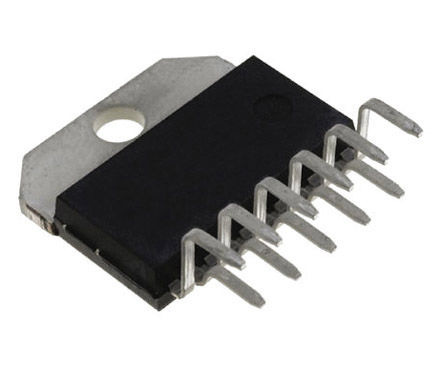
![]()
Pros of TDA chips
- In order to assemble an amplifier on them, it is enough to supply power, connect speakers and several radio elements.
- The dimensions of these microcircuits are quite small, but they will need to be placed on a radiator, otherwise they will get very hot.
- They are sold at any radio store. On Ali, something is expensive, if you take it at retail.
- They have built-in various protections and other options, such as mute and so on. But according to my observations, the protections do not work very well, so the microcircuits often die either from overheating or from. So it is advisable not to close the microcircuit pins to each other and not to overheat the microcircuit, squeezing all the juice out of it.
- Price. I wouldn't say they are very expensive. For the price and functions they perform, they have no equal.
Single-channel amplifier on TDA7396
Let's assemble a simple single-channel amplifier on the TDA7396 chip. At the time of this writing, I took it at a price of 240 rubles. The datasheet for the microcircuit said that this microcircuit can deliver up to 45 watts into a 2 ohm load. That is, if you measure the resistance of the speaker coil and it will be about 2 ohms, then it is quite possible to get a peak power of 45 watts on the speaker.This power is quite enough to arrange a disco in the room not only for yourself, but also for your neighbors and at the same time get a mediocre sound, which, of course, cannot be compared with hi-fi amplifiers.
Here is the pinout of the chip:
We will assemble our amplifier according to the typical scheme that was attached in the datasheet itself:
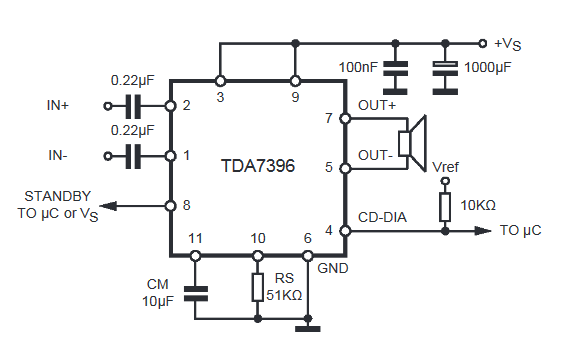
We feed +Vs to leg 8, and we don’t feed anything to leg 4. So the diagram will look like this:
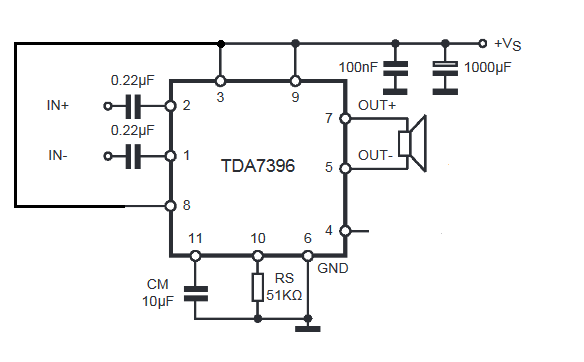
Vs is the supply voltage. It can be from 8 to 18 volts. "IN +" and "IN-" - here we give a weak sound signal. We hook the speaker to the 5th and 7th legs. We put the sixth leg on the minus.
Here is my flush mount build
I did not use capacitors at the 100nF and 1000uF power input, since I have pure voltage coming from the power supply.
Rocked the speaker with the following parameters:
As you can see, the resistance of the coil is 4 ohms. The frequency band indicates that it is a subwoofer type.
And this is what my sub looks like in a self-made case:
I tried to shoot a video, but the sound on the video is very bad for me. But still, I can say that from the phone at medium power it was already pecking so that the ears were wrapped, although the consumption of the entire circuit in working form was only about 10 watts (we multiply 14.3 by 0.73). In this example, I took the voltage, as in a car, that is, 14.4 Volts, which fits well into our operating range from 8 to 18 Volts.
If you do not have a powerful power source, then it can be assembled according to this scheme.
Do not go in cycles in this chip. These TDA chips, as I said, there are many types. Some of them amplify the stereo signal and can output sound to 4 speakers at once, as is done in car radios. So do not be lazy to rummage through the Internet and find a suitable TDA. After completing the assembly, let your neighbors check out your amplifier by unscrewing the volume knob for the entire balalaika and leaning the powerful speaker against the wall).
But in the article I assembled an amplifier on a TDA2030A chip

It turned out very well, since the TDA2030A has better characteristics than the TDA7396
I will also add, for a change, another circuit from a subscriber whose amplifier on the TDA 1557Q has been working properly for more than 10 years in a row:
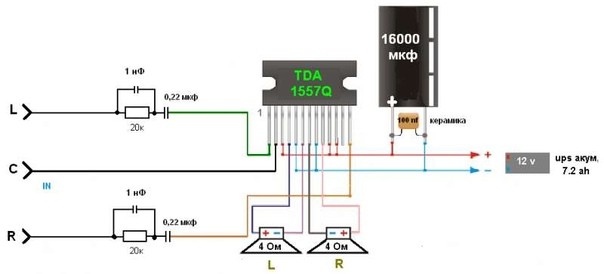
Amplifiers on Aliexpress
On Ali, I also found kit kits on TDA. For example, this stereo amplifier is 15 watts per channel and costs $1. This power is enough to hang out with your favorite tracks in the little room
You can buy.
But he's ready right now
Anyway, there are a lot of these amplifier modules on Aliexpress. Click on this link and choose any amplifier you like.

